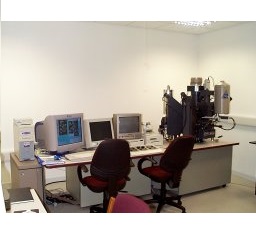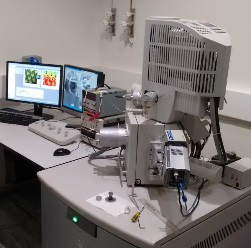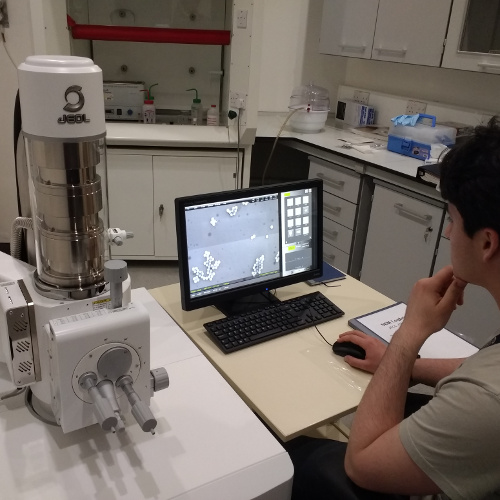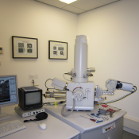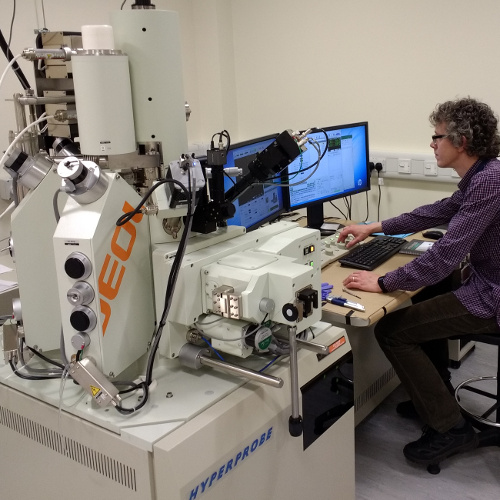University of Strathclyde - Electron Microscopy Facility
Our Microscopes
For enquiries about using this facility please contact Dr Paul Edwards using this enquiry form.
Tungsten electron probe microanalyser
Cameca SX100 EPMA
This instrument is designed for the quantitative analysis of elemental composition using wavelength dispersive X-ray (WDX) spectroscopy. It has been also adapted to allow the acquisition of cathodoluminescence (CL) hyperspectral images in the visible region of the spectrum.
Field-emission environmental scanning electron microscope
FEI Quanta 250 FEG-ESEM
This high-resolution SEM has low-vacuum and environmental capability, making it suitable for measuring non-conductive or hydrated samples. Additional detectors allow electron backscatter diffraction (EBSD), energy-dispersive X-ray (EDX) spectroscopy, cathodoluminescence (CL) and electron beam induced current (EBIC).
Tungsten scanning electron microscope
JEOL JSM-IT100 SEM
This general purpose SEM is fast and easy to use, with a resolution of down to 3 nm. It has low-vacuum capability, allowing non-conducting samples to be measured, and an energy dispersive X-ray (EDX) detector allows the identification and mapping of chemical elements.
Field-emission scanning electron microscope
FEI Sirion 200 FEG-SEM
This is a high-resolution SEM used for general imaging of conductive or coated samples. It is also equipped with experimental detectors for structural characterisation using electron channelling contrast imaging (ECCI) and electron backscatter diffraction (EBSD).
Field-emission electron probe microanalyser
JEOL JXA-8530F EPMA
This instrument is capable of high spatial resolution elemental analysis using a combination of four wavelength dispersive X-ray (WDX) and one energy-dispersive X-ray (EDX) spectrometers. It also has a UV/visible panchromatic cathodoluminescence (CL) detector.
